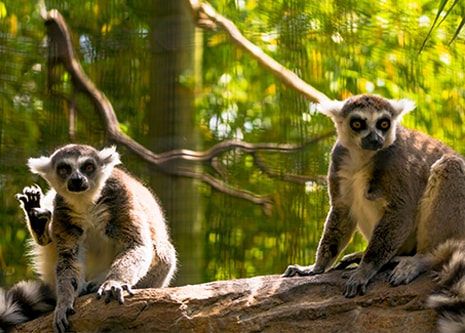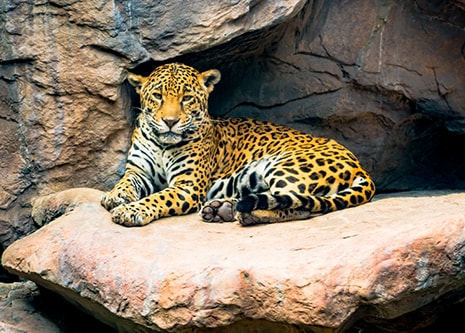
- VisitSupport Happy HollowDONATE TODAYExploreSupport Happy HollowDONATE TODAYLearnSupport Happy HollowDONATE TODAYSupport
-
Today's Hours: 10:00 am to 5:00 pm
Education AmbassadorsGreat Horned Owl

Scientific name: Bubo Virginianus
Family: Strigidae
Order: Strigiformes
Class: Aves
Range: North, Central, and parts of South America
Habitat: Desert, Grassland, Temperate and Tropical Forest, Urban
Lifespan: Up to 20 years in the wild; up to 28 years in captivityWhat do they look like?
Great horned owls are large, powerfully-built birds with barred feathers (alternating bars of
color) of varying shades of brown, black, grey and white. They have a brownish-orange facial disk edged in black, which surrounds their large yellow eyes. They usually have a patch of white on their upper breast. Overall body color varies depending on habitat; for example, arctic and desert populations are paler while those living in dense forests are considerably darker. Their legs and feet are heavily feathered down to the talons. Their
plumicorns (tufts of feathers on their heads) aid in camouflage and also assist in non-verbal communication.How do they behave?
Great horned owls are solitary (live alone), but come together to mate and rear chicks. They are crepuscular (active at dawn and dusk). Their feathers give them silent flight, allowing them to swoop in on unsuspecting prey. Their large, forward-facing eyes give them excellent far-sighted vision, and as a result, they must rely more heavily on their senses of hearing and touch when in close range. They have very sensitive ears, and one
ear is positioned slightly higher and at a different angle than the other so they can determine where sounds are coming from. When they are threatened, great horned owls may hiss, clack their beaks, or fluff up their feathers to appear bigger and intimidate the predator.What do they eat?
In the wild, great horned owls typically hunt small- to medium-sized mammals, including rodents, rabbits, and skunks. Great horned owls have a poor sense of smell, which keeps them relatively unaffected by the skunk’s pungent defensive spray. They will occasionally prey on invertebrates, reptiles, fish and birds in addition to those small mammals. At the Zoo, they are fed mice, rats, and other meat.How are they born?
Great horned owl chicks hatch in haphazard nests often constructed from just a few twigs built onto a tree fork or ledge, or they may take advantage of other birds’ discarded nests. A clutch of 1-3 eggs hatches after about 1 month of incubation, and the chicks are cared for by both parents until they leave the nest. Young owls will fledge (take flight) around 7-8 weeks, but have been seen begging for food up to 5 months old.Conservation
Great horned owls are currently listed as a species of Least Concern by the International Union for Conservation of Nature (IUCN). However, great horned owls are still impacted by habitat loss and other human influences, such as the use of rodenticides (chemicals used to poison rodents). There are international conservation groups working to support owl conservation, such as BirdLife International, which manages habitat and supports researchers who monitor and study global bird populations and species. To help ensure that the great horned owl remains a species of least concern, you can build nest boxes to encourage population growth. You can also avoid using rat poison, this choice will not only keep prey animals safe for owls to eat, but also make your yard safer for children and pets!
Zoo on the Hill
Located across from the Keep-Around Carousel is the Zoo on the Hill. Learn about wildlife up close during daily meet-and-greets, leap like a lemur on the playground, brush and feed the goats,, or take a peek inside Doc’s Critter Care building and the Ranch House. Double-H Ranch features a combination of animal exhibits, including giant anteaters and red ruffed lemurs, as well chickens and domesticated animals that are docile enough to touch.
See Animals
Zoo in the Hollow
Follow the crooked bamboo pathway down into the hollow and visit with some of the most amazing animals in the world. Where else in San José can you get up close to a stunning jaguar, lemur, meerkat or American alligator? Happy Hollow is dedicated to helping save species and preserve wildlife for future generations by participating in Species Survival Plan programs through the Association of Zoos and Aquariums.
See AnimalsVisit Us Today
Plan an unforgettable experience at San Jose’s family-friendly park and zoo.
Learn More